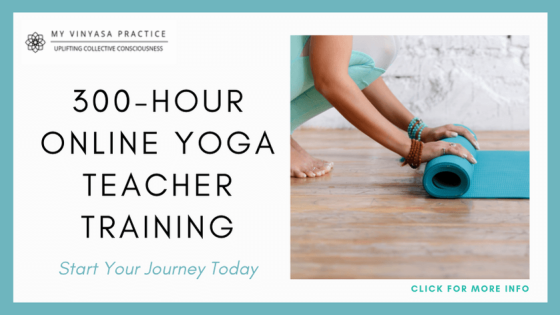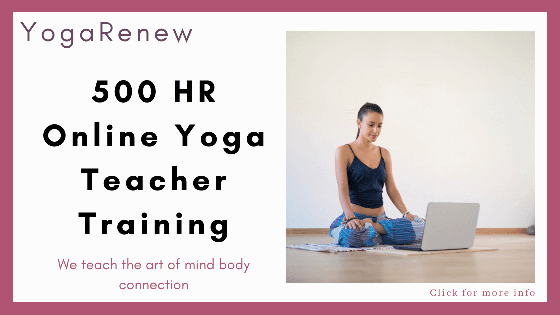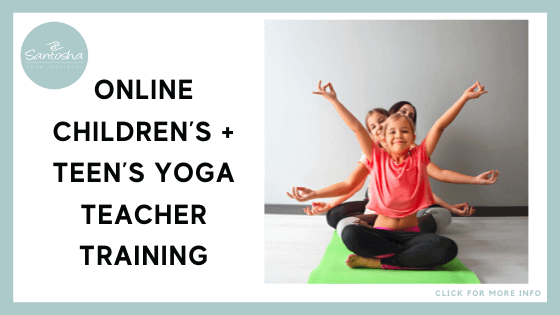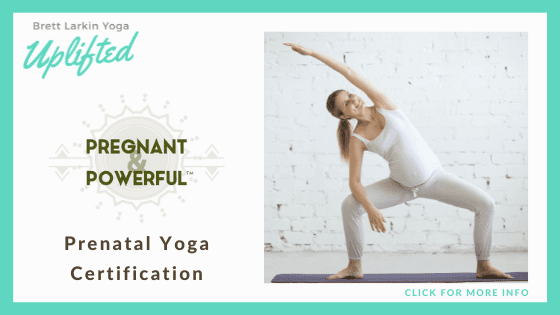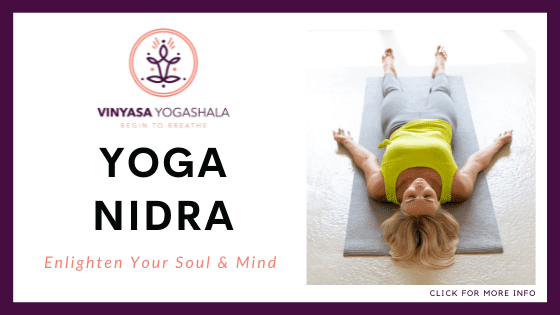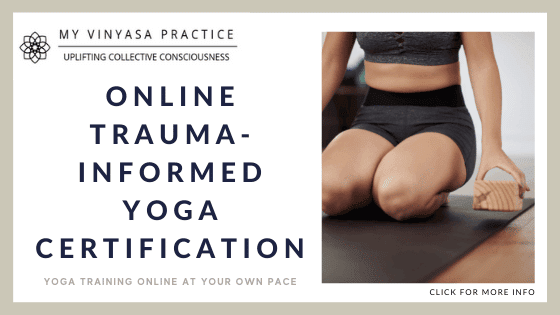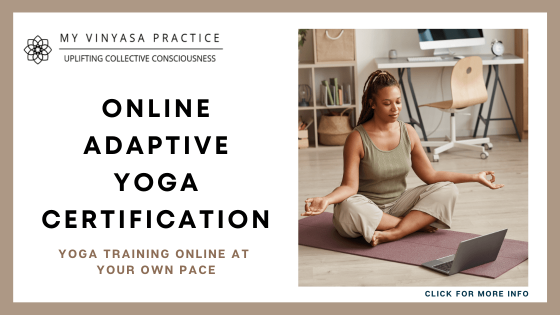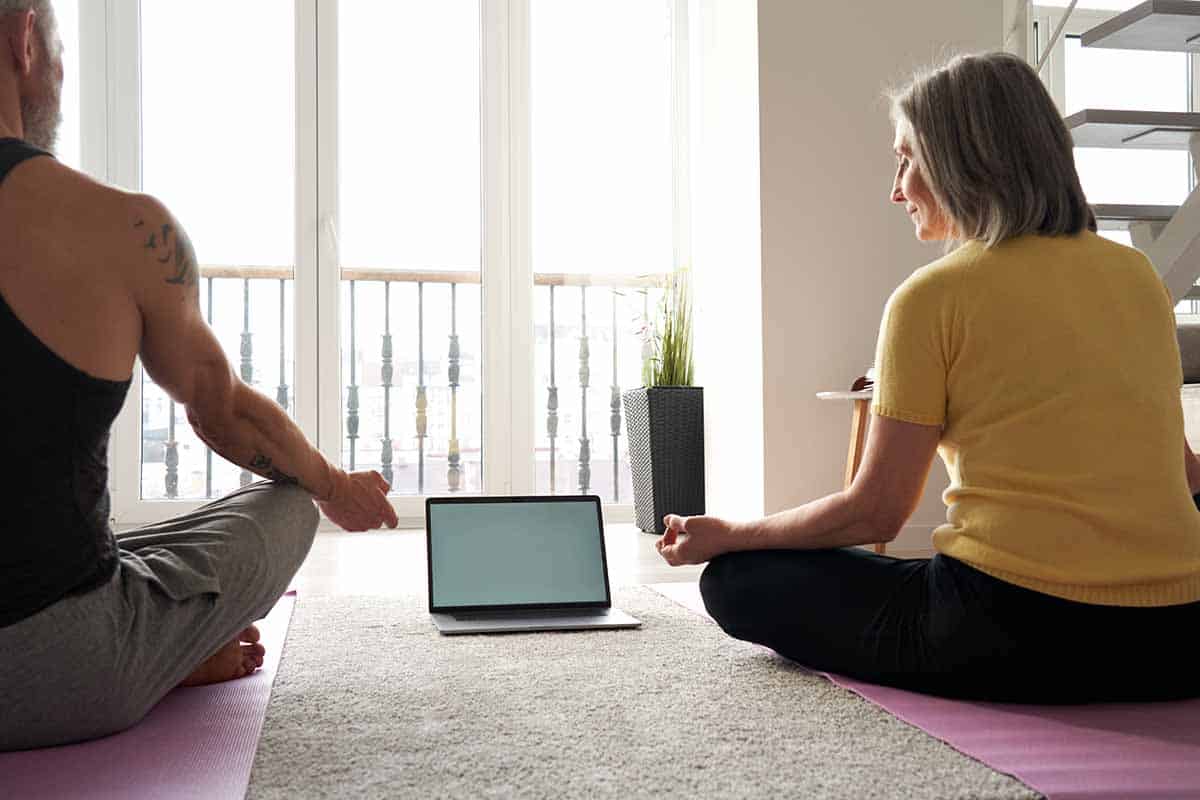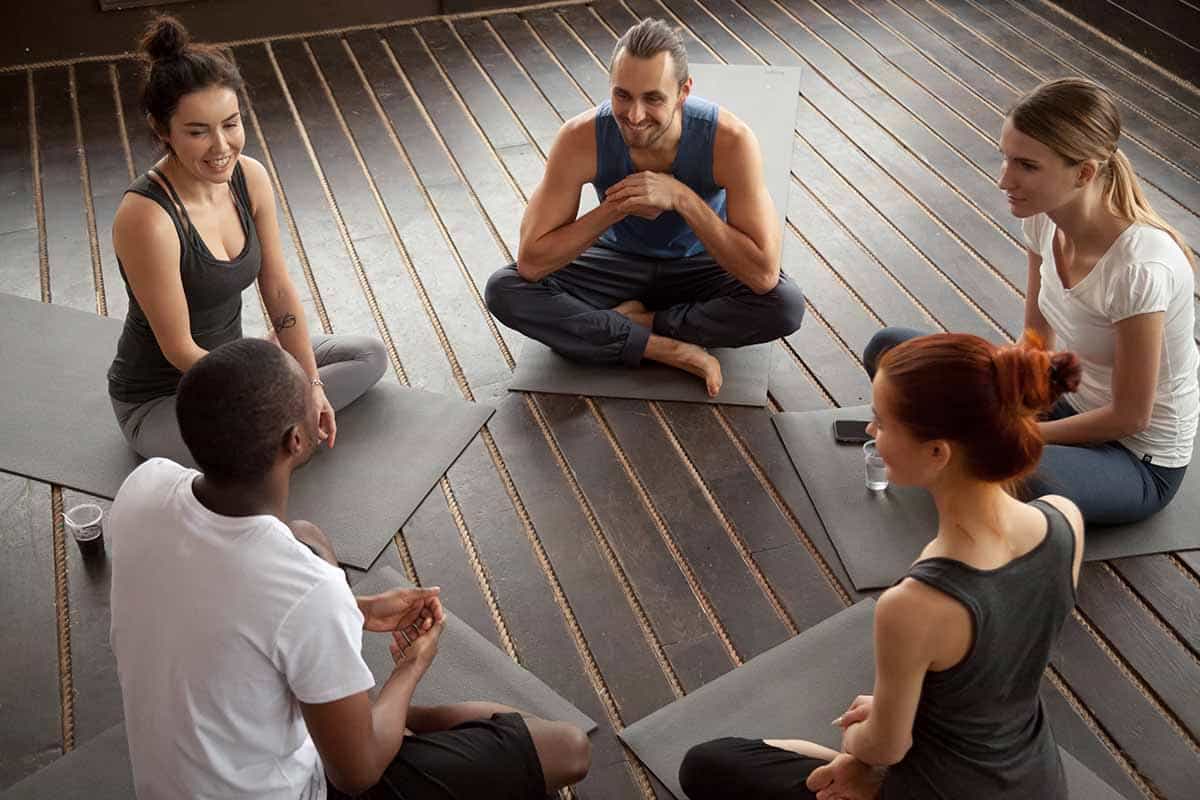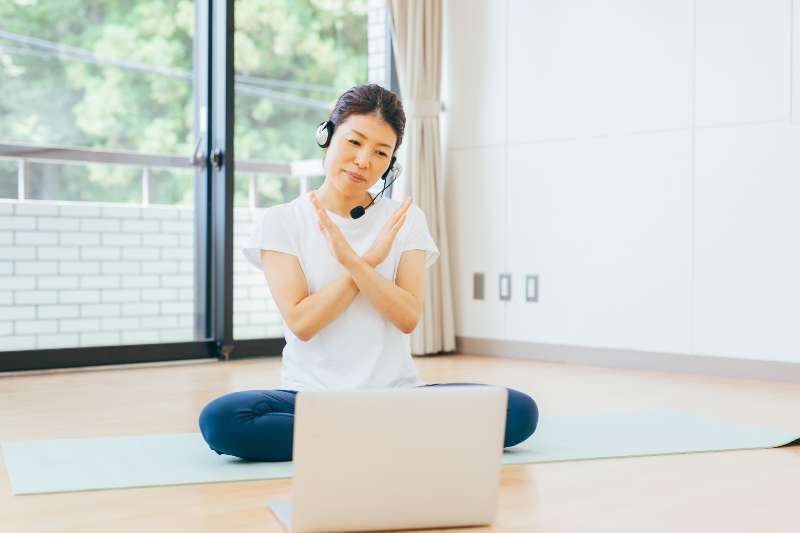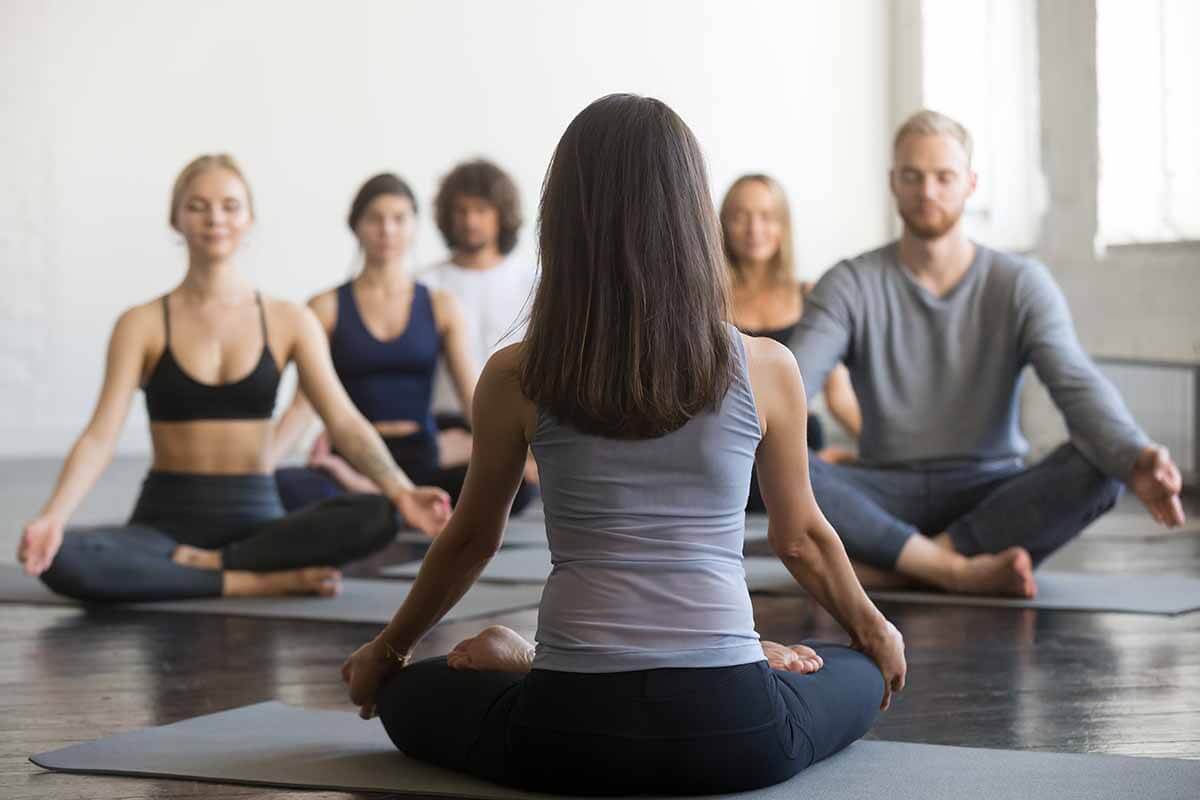
What are the types of yoga training and CE certifications out there?
here are many people that enjoy practicing yoga but do not know where to start. There are several different types of training and certifications that you can become certified in if you choose to practice yoga professionally or simply want to deepen your own personal practice.
The most popular types of yoga training are 200, 300, and 500-hour yoga teacher training, as well as children’s and prenatal yoga teacher training, among many others. Additionally, there are CE certifications like Yin, Nidra, and restorative yoga.
Read on for a discussion about the many different types of yoga training and some CE certifications available for yoga professionals.
Article Topics
What Is Yoga Training or a CE Certification in Yoga?
Yoga training includes how to instruct different types of classes such as Vinyasa flow or Iyengar yoga, and further gain hands-on experience by working with clients or students. Yoga training is not required to become a yoga teacher but is highly recommended for ensuring competency and safety when teaching.
Yoga training is a period of time where a student will learn about yoga, including the philosophy and tenets as well as practical aspects such as anatomy and physiology. CE certifications in yoga are continuing education credits for yoga professionals.
They are given by the Yoga Alliance, the largest yoga registry in the world. CEs are typically obtained by taking workshops or yoga teacher training courses.
Who Sets the Standards for Yoga Training and CE Certifications?
There are standards set for yoga training and for CE certifications. Various workshops, teacher training courses, online programs, or continuing education credits can be used to enhance yoga credentials, and all are standardized when it comes to training.
The Yoga Alliance sets the standard for Yoga Training and CEs. Teachers can either be RYT (registered yoga teacher) 200-hours, RYT 500, or E-RYT (experienced registered yoga teacher).
The Yoga Alliance sets guidelines for what teachers should know in the following categories:
- Anatomy and physiology
- Philosophy and Yoga Sutras
- Teaching methodology
- Business practices for yoga teachers
- Setting up a home practice
The number of hours needed for certification can vary, but one must take at least 200 hours to become an RYT 200, 500 to become an RYT 500, or 1000 hours to become an E-RYT. Additionally, you can receive CEs through Yoga Alliance by taking a test on the knowledge acquired in one of these areas of training.
The Many Types of Yoga Training and CE Certifications
Yoga training and certifications are available for all levels and will vary in content depending on the certification level. Depending on your desires for your practice, there are a few main types of yoga certifications: RYT 200, RYT 500, E-RYT, and more.
The Yoga Alliance has set requirements for the number of hours one must have in each training category to receive a certificate with particular credentials.
200-Hour Yoga Teacher Training
200-hour yoga teacher training has become very popular with yoga students around the world. Yoga Alliance offers 200 hours of online training through their RYT 200 certification, which means anyone who is truly dedicated can become a certified yoga teacher without ever meeting face to face or even leaving their own home!
Though it isn’t required, some schools choose to offer further training with added modules that may include anatomy and philosophy or self-practice. Many teachers also turn to workshops and seminars offered by other instructors to round out their knowledge base.
A 200-hour certificate is a minimum required for someone to call themselves a yoga teacher however, it does not make the person knowledgeable enough to teach in most circumstances. Many teachers take additional training and courses in order to expand their knowledge in specific areas such as:
- Anatomy/physiology
- Philosophy
- Teaching methodology, and
- Business practices for yoga teachers.
An RYT 200 is a Yoga Alliance registered yoga teacher. This designation indicates that an individual has received training to become a yoga instructor through Yoga Alliance’s “200 Hour Training Program.” Teachers who have this certification can teach beginner-level classes but cannot teach intermediate or advanced level classes.
300-Hour Yoga Teacher Training
300-hour yoga teacher training is one of the most widely recognized certificates among yoga students and teachers alike. The Yoga Alliance, a non-profit organization that works to provide yoga practitioners with information about the practice, has made it even easier for aspiring instructors to find legitimate programs by requiring teachers to register their training programs on its website before they are eligible to teach.
300 Hour Training Programs Offer:
- Self Practice
- Teacher Demonstration/Modeling
- Anatomy & Physiology
Hatha Yoga Pradipika is an example textbook used in many 300-hour teacher training programs.
500 Hour Yoga Teacher Training
500-hour yoga teacher training programs are designed to provide teachers with the skills they need to lead yoga classes. Yoga Alliance requires that 50 percent of all content hours are hands-on, which allows participants to practice teaching techniques under the supervision of their instructors.
Yoga Alliance registration is required for 500 Hour Training Programs. The prerequisite for this level of training is at least a 200-hour certification or equivalent training in Hatha Yoga. Ashtanga vinyasa yoga is an example text used in many 500-Hour Teacher Training Programs.
Children's Yoga Teacher Training
This kid’s yoga teacher training is another option. Courses cover the principles of yoga and general child development, along with how to teach children’s yoga classes to specific age groups.
Children’s yoga is a special yoga practice in which participants experience a connection to their child self through play, creativity, imagination, and movement. This is a fun option for adults who want to teach children’s yoga classes or parents who want to add this class to their kid’s activities.
Classes may include breathing exercises, meditation, and relaxation techniques. Yoga Alliance registration is required for 500 Hour Training Programs. The prerequisite for this level of training is at least a 200-hour certification or equivalent training in Hatha Yoga and Children’s yoga teacher training.
You must pass the RYT 200 before enrolling for the Registered Children’s Yoga Teacher Training. After completing the 95-hour yoga teacher training, you may apply to be a children’s yoga instructor with the RYT 200 experience.
Prenatal Yoga Teacher Training
There are a number of prerequisites that must be met in order to become a Registered Prenatal Yoga Teacher (RPYT). Prenatal yoga certifications require:
- An RYT 200 certification
- CPR training, and
- Completion of the RPYT prenatal certification.
Prenatal yoga teachers are in high demand and are able to work at many:
- Health clubs
- Gyms
- Wellness centers
- Hospitals and private practices.
Locations and course lengths vary, as do the topics covered. In addition to the core principles of yoga, you will learn about prenatal, postnatal, and parent-child dynamics that affect your teaching.
Yin Yoga Teacher Training
Yin yoga teacher training is a distinct and specialized approach in the yoga world. Yin yoga practitioners may be enthusiastic about teaching others interested in learning the technique.
Yin yoga is a slow-paced style of yoga that focuses on stretching your connective tissues. These are the areas where you feel tightness and tension, such as where your muscles meet your bones. Since it’s not as physically demanding as other types of yoga, yin benefits those who have injuries or limitations, older adults who want to stay fit without straining their bodies.
Yin yoga certifications require a Hatha yoga certification, CPR training, and completion of the yin yoga teacher training course. Topics covered include the philosophy, form, practices, concepts, and sequencing of yin yoga classes. The course also covers how to teach in this format.
Nidra Yoga Teacher Training
Yoga Nidra teacher training is a type of training that will help you understand the practice and teach yoga Nidra classes.
Yoga Nidra class focuses on deep relaxation and meditation, which can be helpful to those who meditate or seek to provide effective guided meditations for their students. Yoga Nidra teachers should have an understanding of relevant topics such as:
- Anatomy
- Physiology
- Body mechanics
- Kinesiology
- Pranayama
- Ayurveda, and general knowledge about yoga philosophy.
To start a private practice, you’ll need to complete an accredited training program that provides at least 200 hours of content. After finishing a course, you’ll need to take part in continuing education to keep your Yoga Nidra credentials valid.
It’s important to note that no official credential is required for yoga instructors at this moment. On the other hand, Yoga Nidra certification is suggested for anybody looking to advance their profession and practice. That’s the accreditation given out by the Yoga Alliance, which is highly valued.
Trauma-Informed Yoga Teacher Training
This Trauma-informed yoga certification online is a specialized program that can help promote healing and recovery for those who’ve suffered trauma. Yoga teacher training in the Trauma-Informed model focuses on several key competencies, such as creating an environment where learning takes place, creating connections between instructors and students, and modeling appropriate boundaries.
A trauma-informed yoga certification helps health care practitioners recognize trauma-related problems, including:
- Depression
- Anxiety
- Inability to sleep
- Feeling detached from the body or emotional numbing
- Psychological, mental, and physical trauma symptoms.
Trauma-informed yoga is a type of therapy that aids those who are practicing to overcome various types of trauma. Everyone is affected differently by trauma, and if left untreated, it can have long-term consequences. Yoga’s movements, combined with meditation and focused breathing, have been found in studies to improve the health and well-being of persons suffering from posttraumatic stress disorder (PTSD).
Kundalini Yoga Teacher Training
Kundalini yoga is a centuries-old tradition that Yogi Bhajan popularized to the West in recent decades. Yogi Bhajan introduced Kundalini Yoga to the Western world in the 1970s. For hundreds of years, it was only revealed to royalty and aristocracy as a secret. It’s now available for everyone to learn about.
Kundalini yoga training is ideal for anyone who wants to explore Kundalini teacher training or deepen his/her own personal practice. It is rigorous training that covers subjects ranging from meditation to mantra chanting, kriya, ethics, and the philosophy of Kundalini yoga.
Adaptive Yoga Teacher Training
Adaptive yoga is a type of yoga designed for those who have special needs. In other words, it’s a form of yoga that can be adapted to fit the individual’s disability or condition. As mentioned before, many people with special needs were afraid to move because they didn’t know how to do physical activity without hurting themselves.
But this is not the case with adaptive yoga! The poses and movements are slow and gentle yet also very powerful. Adaptive yoga is perfect for:
- The elderly
- People with arthritis
- Those recovering from an injury or surgery, and
- Anyone else who wants to try yoga but may be intimidated by a typical class.
This kind of yoga is intended to make the practice more accessible to everyone by including light physical actions and stretches for various body types and mobility levels!
Restorative Yoga Teacher Training
Restorative yoga is a popular form of yoga that involves a lot of laying down and relaxing. Before practicing it on your own, you’ll need to become certified in the practice. You’ll learn everything from anatomy and physiology to guided meditation and how to give Savasana demonstrations.
A minimum of 200 hours of in-person training is required to become a restorative yoga instructor. This style of slow yoga emphasizes deep breathing and stillness, promoting emotional, physical, and mental relaxation. Restorative yoga doesn’t involve a lot of moves or poses but instead emphasizes using props to create a cozy and comfortable space.
Summary
Yoga teacher training is not one-size-fits-all. There are different types of yoga training to choose from, depending on your needs and lifestyle. Each type has its own unique benefits that will help you grow as a teacher, no matter what path you choose!
There are several different programs and certifications for yoga teachers, whether you’re looking for a weekend workshop or a 200-hour course. This is why when choosing the right yoga teacher training, it’s essential to consider what kind of yoga style you want to teach and who your target audience will be.

